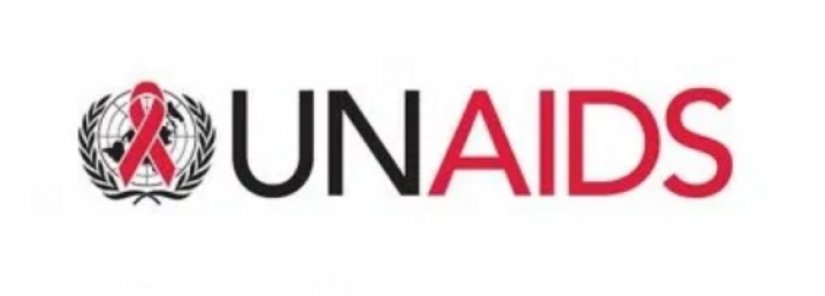Tamale, July 14, GNA – The latest report on the progress towards the Start Free, Stay Free, AIDS Free targets has shown that despite great progress made since the early days of the epidemic, the HIV response for children has fallen behind.
Year after year, the bold target of eliminating new HIV infections among children is being missed and children are dying needlessly from AIDS-related illnesses – deaths that could be prevented with simple and cheap treatments if the children were diagnosed and treated on time.
This was contained in a statement issued in Geneva, Switzerland by the Joint United Nations Programme on HIV/AIDS (UNAIDS).
The statement quoted Ms Winnie Byanyima, Executive Director of UNAIDS as saying “To see so many tools available, so many new HIV infections among children that have been prevented, so many children living with HIV doing well, but to see others missed and still left behind is a tragedy.”
The Start Free, Stay Free, AIDS Free framework has three simple concepts. First, babies have a right to enter the world free from HIV. Second, through HIV prevention, children, adolescents and young women have a right to stay free from the virus. Third, children and adolescents who do acquire HIV have the right to be diagnosed, treated and cared for, so that they can remain AIDS-free.
The world’s countries have agreed to a range of HIV prevention and treatment targets. So that children start out their lives HIV-free, one of those targets was to reduce new child (aged 0–14 years) HIV infections to less than 40,000 by 2018 and 20,000 by 2020.
The statement said “However, newly published estimates show that 150,000 children were newly infected with HIV in 2019—a 52 per cent reduction since 2010, but still four times the 2018 target.”
It said “By ensuring that pregnant women living with HIV are diagnosed, started on and retained on anti-retroviral medicines during pregnancy, delivery and breastfeeding, the chance that they will pass on the virus is less than 1 per cent.”
It added that “Globally, 85 per cent of pregnant women living with HIV received those medicines in 2019. But despite the high coverage, children are still becoming infected due to unequal access to treatment services (primarily in Western and Central Africa), women falling out of care and pregnant and breastfeeding women becoming newly infected with HIV.”
“As a global community, we have made remarkable progress toward controlling the HIV pandemic, yet we are still missing far too many children, adolescents and young women,” said Angeli Achrekar, Principal Deputy United States Global AIDS Coordinator, United States President’s Emergency Plan for AIDS Relief.
She added that “We must all redouble our efforts to urgently reach these critical populations—and PEPFAR remains deeply committed to doing its part.”
The stay-free component set a target of reducing new HIV infections among adolescent girls and young women to less than 100 000 by 2020. Adolescent girls and young women have long been disproportionately affected by HIV—among the Start Free, Stay Free, AIDS Free focus countries, adolescent girls and young women make up 10 per cent of the total population but represent 25 per cent of new HIV infections and are at an almost twofold higher risk of HIV infection compared with their male peers.
However, new HIV infections among young women have been falling. In South Africa, where combination prevention programmes for adolescent girls and young women are in place, new HIV infections among this age group have dropped by 35 per cent. And in Eswatini, new HIV infections among young women aged 15–24 years have dropped by 54 per cent.
“For too long, the response to HIV has overlooked children, adolescent girls and young women,” said Henrietta Fore, Executive Director of the United Nations Children’s Fund.
She added “But there is hope. The recent momentum in reducing new infections among adolescent girls and young women in Eswatini and South Africa show us what is possible when governments and communities, led by girls themselves, join forces.”
She emphasised that “We must not let COVID-19 and its economic headwinds slow us down. We must remain bold and ambitious in our joint efforts to ensure that the next generation of children remains free of HIV and AIDS.”
The statement said “So that children and adolescents stay AIDS-free, countries called for ambitious but achievable targets for HIV treatment for children—to provide 1.4 million children living with HIV with antiretroviral therapy by 2020.”
It said “In 2019, however, only 950 000 (53 per cent) of the 1.8 million children living with HIV were receiving HIV treatment—much lower than the 67 per cent of adults on treatment. It is clear that to save lives, the missing 840 000 children not on treatment —an estimated two thirds of whom are estimated to be between 5 and 14 years—must be diagnosed and treated as a matter of urgency.”
“The lack of optimal HIV medicines with suitable paediatric formulations has been a longstanding barrier to improving health outcomes for children living with HIV, contributing towards low treatment coverage,” said Tedros Adhanom Ghebreyesus, Director-General of the World Health Organisation.
He emphasised that “Access to services for vulnerable groups must be expanded through stronger community engagement, improved service delivery and tackling stigma and discrimination.”

